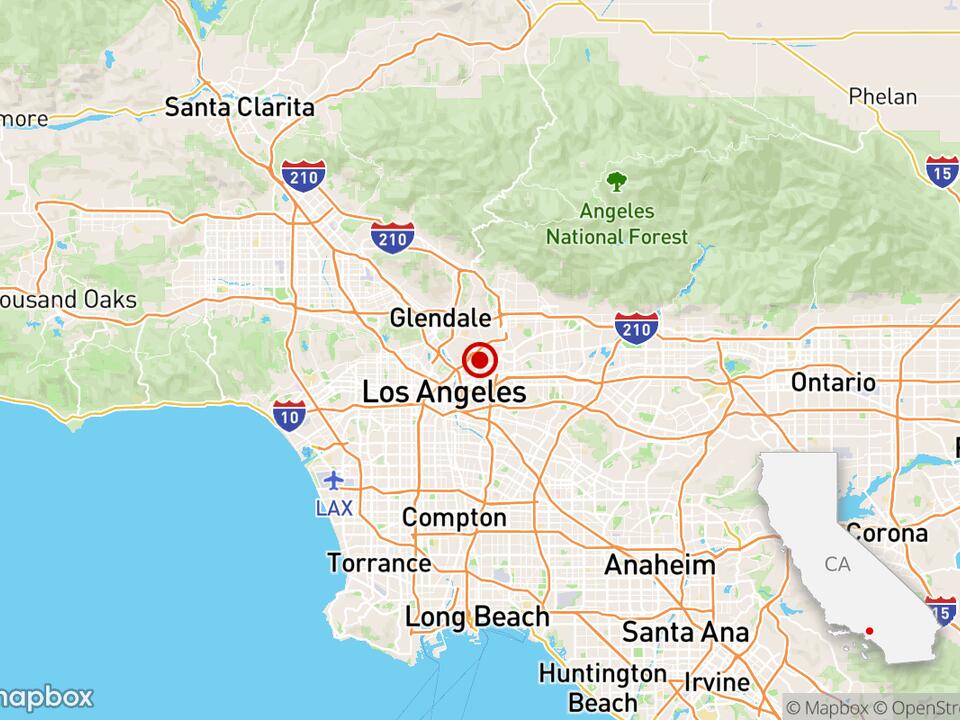Physical Address
304 North Cardinal St.
Dorchester Center, MA 02124
Physical Address
304 North Cardinal St.
Dorchester Center, MA 02124

On Monday, a magnitude 4.4 earthquake struck four miles northeast of downtown Los Angeles, delivering a notable jolt to residents. While the quake did not cause significant damage, it serves as a stark reminder of the seismic risks associated with a fault system in the area that specialists have long considered capable of causing a catastrophic earthquake.
The earthquake occurred along a minor strand of the Puente Hills thrust fault system, a geological feature recognized as a significant seismic threat for Southern California. This fault system runs through densely populated regions, raising concerns about its potential to generate a large earthquake.
According to earthquake expert Lucy Jones, this fault is “actually our most dangerous fault,” even more so than the infamous San Andreas fault. The strand that ruptured on Monday was relatively small, only stretching a few hundred feet across. It’s common for minor earthquakes to occur along small fault lines, and they typically do not precede more significant seismic events.
Residents of El Sereno, a neighborhood in East Los Angeles, have been experiencing seismic activity since early June, underscoring the ongoing threat of earthquakes in Southern California. The recent quake was located roughly 1,100 feet southwest of the intersection of Huntington Drive and Eastern Avenue and followed a series of smaller earthquakes earlier in June—a magnitude 3.4 on June 2, a magnitude 2.8 on June 4, and a magnitude 2.9 on June 24, all linked to the same fault system.
James Dolan, a professor of earth sciences at USC, noted that these recent earthquakes are clustered closely beneath the main fault plane of the Puente Hills thrust fault. Despite the proximity of these smaller quakes, they remain minor and do not necessarily indicate a looming larger earthquake.
The Puente Hills thrust fault system runs from northern Orange County through the San Gabriel Valley and under downtown Los Angeles, ending in Hollywood. Scientists are particularly concerned about this fault because it traverses highly populated areas, including older parts of the city with structures that may not withstand a significant quake.
Experts warn that a major earthquake—potentially of magnitude 7.5—along this fault could have devastating consequences, potentially resulting in the loss of 3,000 to 18,000 lives, according to estimates from the U.S. Geological Survey and the Southern California Earthquake Center. The economic fallout could reach as high as $252 billion, marking it as potentially the most costly disaster in U.S. history.
This risk is more severe than the estimated death toll of 1,800 people from a hypothetical magnitude 7.8 earthquake originating on the southern San Andreas fault and extending all the way to Los Angeles County.
While scientists believe that the Puente Hills fault experiences a major earthquake roughly every few thousand years, they remain uncertain about when the last significant quake occurred. In contrast, the San Andreas fault is known to rupture more frequently, with a documented major earthquake happening in 1857 that was estimated at around 7.8 in magnitude.
Even moderate earthquakes can lead to severe damage. The 1987 magnitude 5.9 Whittier Narrows earthquake caused substantial destruction to older brick buildings in Whittier and damaged freeway bridges. Over 100 single-family homes and more than 1,000 apartment units were impacted, resulting in over $350 million in damages and eight reported fatalities.
In 2014, a magnitude 5.1 earthquake in La Habra affected residents within ten miles of the epicenter, toppling furniture and causing property damage. Some homes and apartments were red-tagged due to possible structural issues that arose from that quake.
The Puente Hills thrust fault system was not fully known until it ruptured in 1987, and it wasn’t officially recognized until 1999. This followed the 1994 Northridge earthquake, which also occurred along an “invisible” fault that scientists had previously been unaware of.
Monday’s 4.4 magnitude quake adds to the experience of seismic activity in the area, which includes recent events like a magnitude 5.2 quake near Bakersfield. California’s early warning system effectively provided alerts during these occurrences.
Experts emphasize the importance of preparedness in light of these events. Dolan encourages residents to take necessary precautions, such as stockpiling emergency supplies and securing heavy furniture to minimize potential hazards during future earthquakes.
“If it inspires even a few people to do that, that’s a good thing for L.A.,” Dolan stated. He urged residents to be ready for the likelihood of significant earthquakes in the region’s future, stressing the unpredictability regarding timing and specific fault lines.
Source: Los Angeles Times



